The site of the holiday home in Rhodes/Greece yet possess characteristics and outstanding qualities, which we only attempted to frame with our design.
The site is located three meters above a coastal road, which is bordered by a natural stonewall that has been equally continued for our proposal. On the one hand the continuation of the found wall generates a high level of privacy, while on the other hand it relates to the given situation in this area, which we were tempted to preserve as much as possible.
The holiday home was designed for a couple. They wished a separate area for guests, which we mostly embedded in the given topography by integrating the shady tree population and without generating an equally visible volume.
At first sight the typology of the building seems to be strange compared with the context. However this first impression will be refuted by the choreography of the building, which is precisely orientated at the context. While from a formal point of view the building relates to the found eroded rocks and the washed away shoreline, the entrance was generated by an interruption in the continuous natural stonewall, which leads one at first „under“ the site. Skylights show the path up to the main living area. The generated twist focuses our sight towards the ocean, whereas the surrounding walls only serve as a frame of the context. Thus a spatial division of the different uses was avoided where possible, as well as a differentiation of interior- and exterior spaces. Most important was to prevent a limitation of the magnificent view.
Through a mechanically controlled opening in the roof a well-known chimney effect will be activated, which starts at the massive base plate in the garage from where integrated cable ducts lead cooled air through the building. An additional cooling effect will be provided by the evaporation of the pool. The triangle-shaped photovoltaics on the roof provides the building with energy and enables a self-sufficient living.
Areas, which are kept spatially open will profit from cantilevers, which keep these areas shaded.
Architects: Hornung And Jacobi Architecture (www.hornungjacobi.com)
Project: Villa F
Project Team: Peter Thomas Hornung & Elsa Katharina Jacobi, Jan Escher
Location: Rhodes, Greece
Year: 2011-undisclosed
Type: Residential
Size: 220qm
Visualisations: bloomimages (http://www.bloomimages.de/)
Project: Villa F
Project Team: Peter Thomas Hornung & Elsa Katharina Jacobi, Jan Escher
Location: Rhodes, Greece
Year: 2011-undisclosed
Type: Residential
Size: 220qm
Visualisations: bloomimages (http://www.bloomimages.de/)
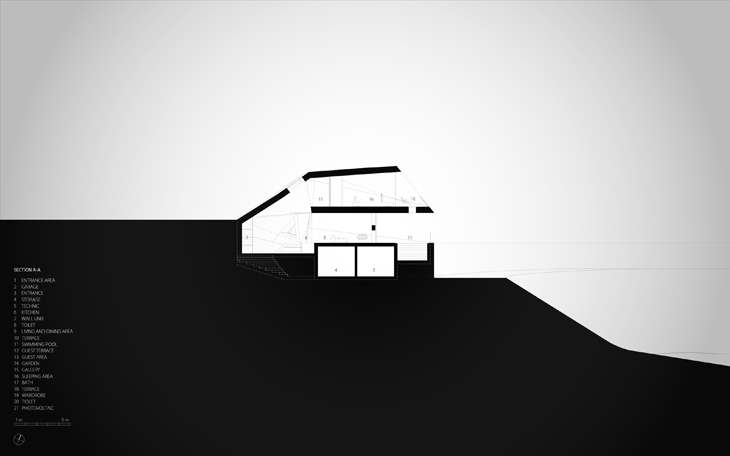 HORNUNG AND JACOBI ARCHITECTURE_VILLA F_SECTION AA: SECTION
HORNUNG AND JACOBI ARCHITECTURE_VILLA F_SECTION AA: SECTION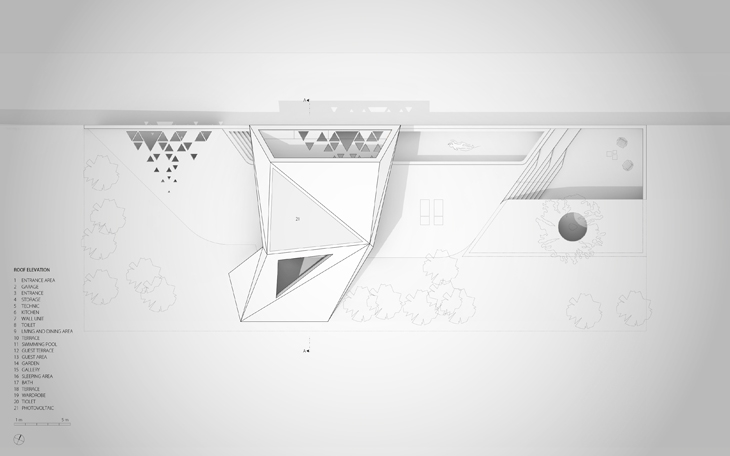 HORNUNG AND JACOBI ARCHITECTURE_VILLA F_ FLOOR PLAN_04: SITE PLAN
HORNUNG AND JACOBI ARCHITECTURE_VILLA F_ FLOOR PLAN_04: SITE PLAN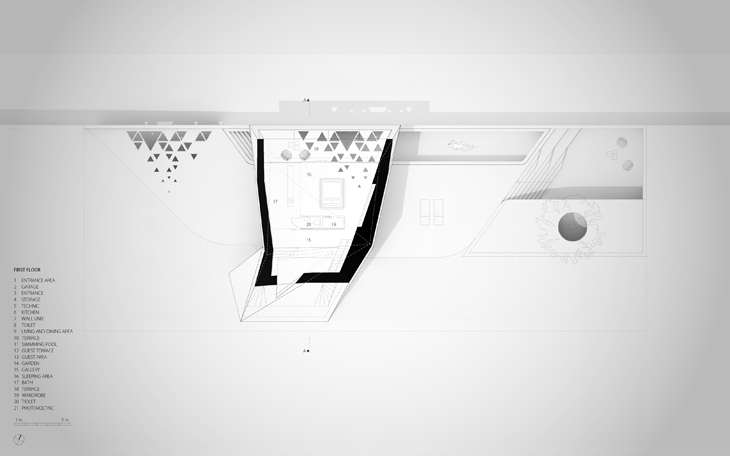 HORNUNG AND JACOBI ARCHITECTURE_VILLA F_ FLOOR PLAN_03: PRIVATE AREA
HORNUNG AND JACOBI ARCHITECTURE_VILLA F_ FLOOR PLAN_03: PRIVATE AREA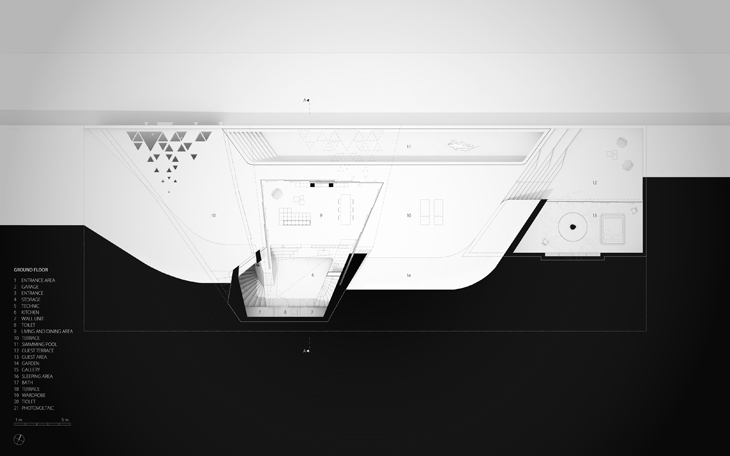 HORNUNG AND JACOBI ARCHITECTURE_VILLA F_ FLOOR PLAN_02: LIVING AREA AND GUEST AREA
HORNUNG AND JACOBI ARCHITECTURE_VILLA F_ FLOOR PLAN_02: LIVING AREA AND GUEST AREA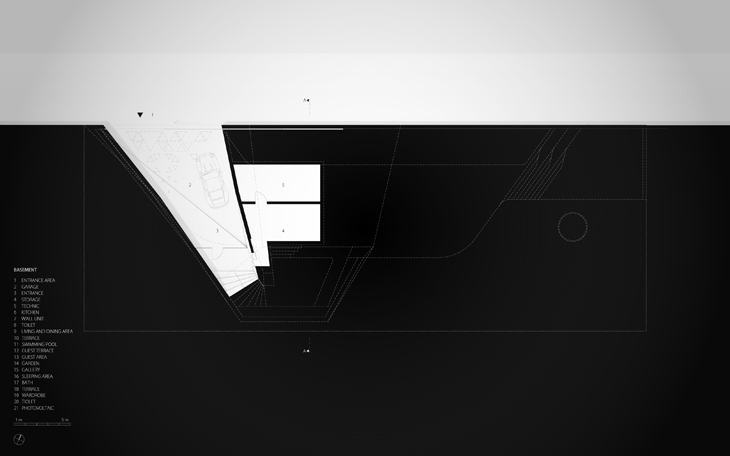 HORNUNG AND JACOBI ARCHITECTURE_VILLA F_FLOOR PLAN_01: GROUND FLOOR INCLUDING CAR PARKING
HORNUNG AND JACOBI ARCHITECTURE_VILLA F_FLOOR PLAN_01: GROUND FLOOR INCLUDING CAR PARKING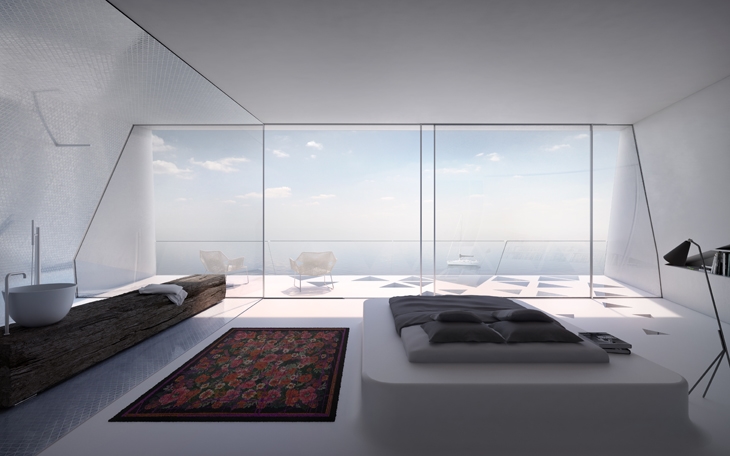 HORNUNG AND JACOBI ARCHITECTURE_VILLA F_09: THE OPEN PLAN AND PRIVATE AREA ABOVE OPENS UP TO A BREATHTAKING VIEW TOWARDS THE OCEAN, WHILE THE DESIGN OF THE BED DRAWS A MODERN ANALOGY TO THE TRADITIONAL GREEK CARPENTRY. THE OVERLAPPING ROOF SUPPORTS THE INTEGRATED COOLING SYSTEM.
HORNUNG AND JACOBI ARCHITECTURE_VILLA F_09: THE OPEN PLAN AND PRIVATE AREA ABOVE OPENS UP TO A BREATHTAKING VIEW TOWARDS THE OCEAN, WHILE THE DESIGN OF THE BED DRAWS A MODERN ANALOGY TO THE TRADITIONAL GREEK CARPENTRY. THE OVERLAPPING ROOF SUPPORTS THE INTEGRATED COOLING SYSTEM.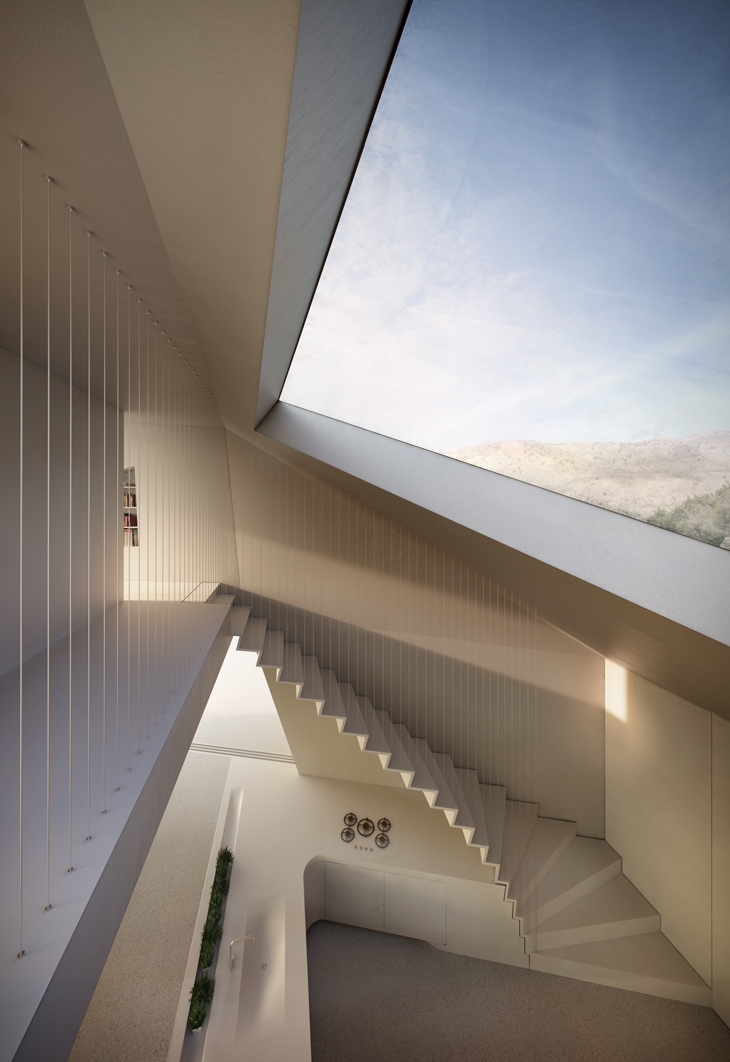 HORNUNG AND JACOBI ARCHITECTURE_VILLA F_08: THE SHAPE OF THE UPPER ROOF LIGHT FOLLOWS THE LANGUAGE OF THE WHOLE DESIGN, WHILE THE CAST OF THE SHADOW DRAWS A DISTORTED TRIANGLE.
HORNUNG AND JACOBI ARCHITECTURE_VILLA F_08: THE SHAPE OF THE UPPER ROOF LIGHT FOLLOWS THE LANGUAGE OF THE WHOLE DESIGN, WHILE THE CAST OF THE SHADOW DRAWS A DISTORTED TRIANGLE.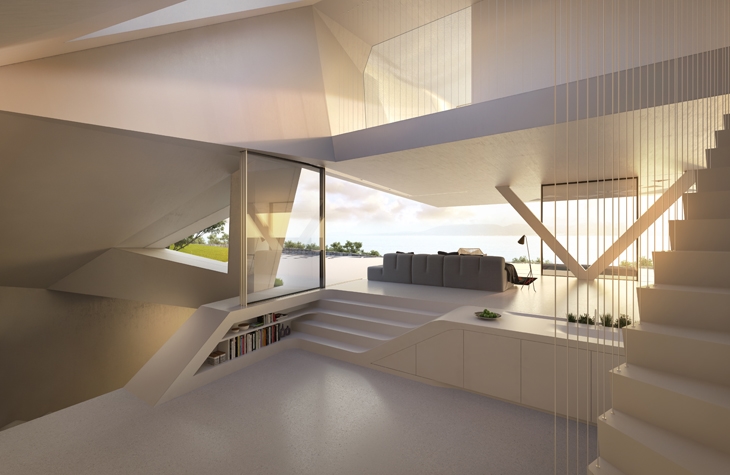 HORNUNG AND JACOBI ARCHITECTURE_VILLA F_06: THE UPPER ARRIVAL AREA IS DESIGNED AS A CONTINUES ?INNER LANDSCAPE? AND IS LEADING TOWARDS THE SHADED LIVING AREA.
HORNUNG AND JACOBI ARCHITECTURE_VILLA F_06: THE UPPER ARRIVAL AREA IS DESIGNED AS A CONTINUES ?INNER LANDSCAPE? AND IS LEADING TOWARDS THE SHADED LIVING AREA.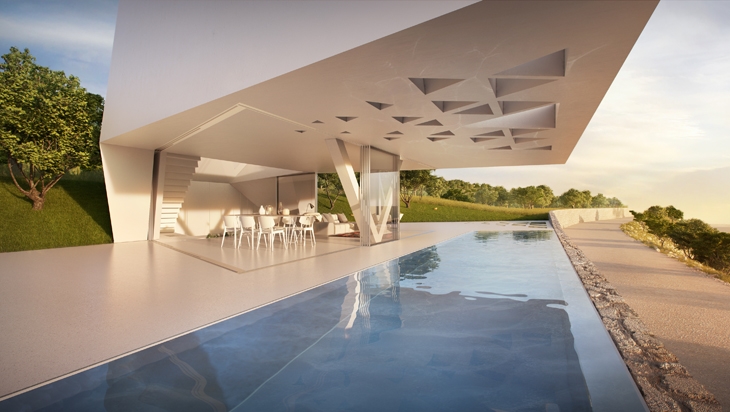 HORNUNG AND JACOBI ARCHITECTURE_VILLA F_05: THE INFINITY POOL IS PART OF THE OUTSIDE AREA AND SERVES AS A RAILING/FALLING PROTECTION AS SUCH AND GENERATES A COOLING EFFECT DUE TO THE WATER EVAPORATION.
HORNUNG AND JACOBI ARCHITECTURE_VILLA F_05: THE INFINITY POOL IS PART OF THE OUTSIDE AREA AND SERVES AS A RAILING/FALLING PROTECTION AS SUCH AND GENERATES A COOLING EFFECT DUE TO THE WATER EVAPORATION.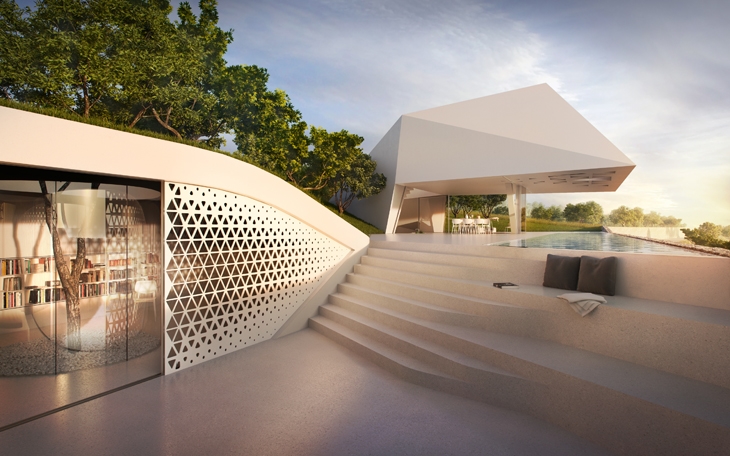 HORNUNG AND JACOBI ARCHITECTURE_VILLA F_04: VIEW FROM THE GUEST AREA, WHICH IS BENEATH THE MAIN LIVING AREA AND INTEGRATED IN THE EXISTING TOPOGRAPHY OF THE SITE.
HORNUNG AND JACOBI ARCHITECTURE_VILLA F_04: VIEW FROM THE GUEST AREA, WHICH IS BENEATH THE MAIN LIVING AREA AND INTEGRATED IN THE EXISTING TOPOGRAPHY OF THE SITE. 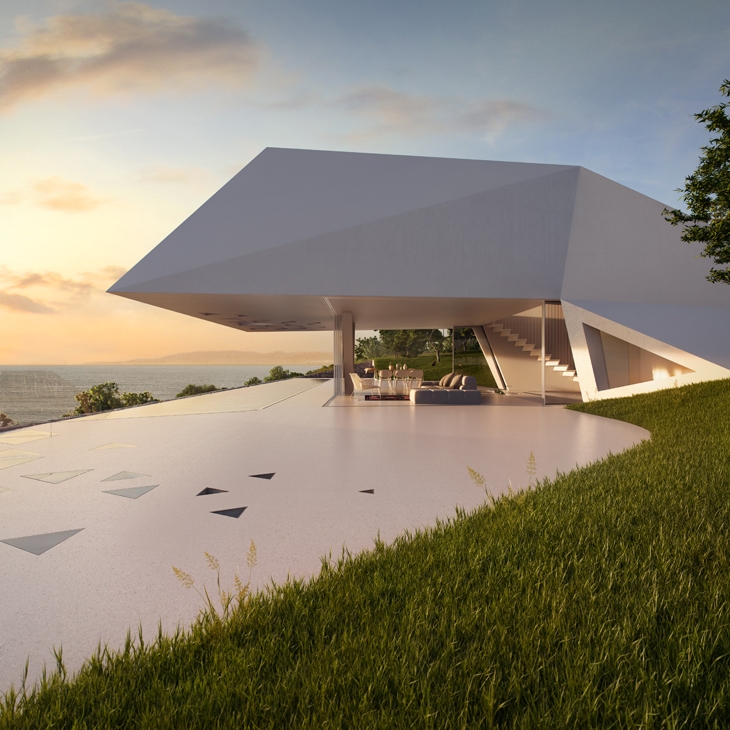 HORNUNG AND JACOBI ARCHITECTURE_VILLA F_03: VIEW FROM THE OUTSIDE AREA, SHOWING THE FLUENT TRANSITION BETWEEN INSIDE AND OUTSIDE AREAS.
HORNUNG AND JACOBI ARCHITECTURE_VILLA F_03: VIEW FROM THE OUTSIDE AREA, SHOWING THE FLUENT TRANSITION BETWEEN INSIDE AND OUTSIDE AREAS.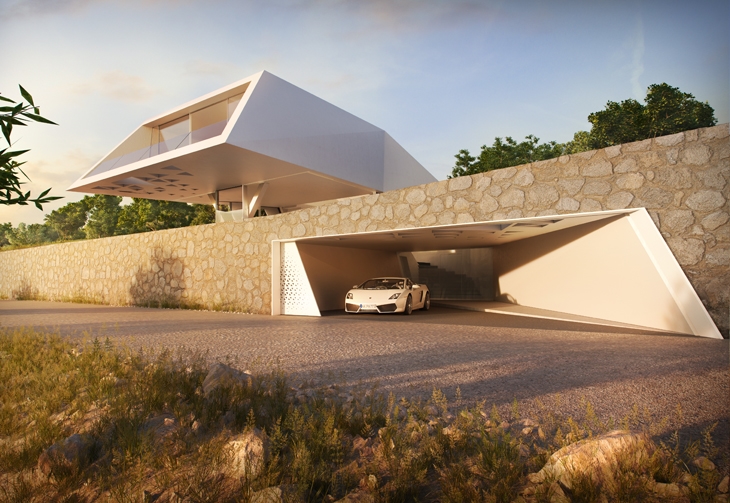 HORNUNG AND JACOBI ARCHITECTURE_VILLA F_02: ENTRANCE AREA WITH AN INTEGRATED SLIDING DOOR, ROOF LIGHTS FROM THE ABOVE GARDEN LEADING TOWARDS THE ENTRANCE STAIR CASE.
HORNUNG AND JACOBI ARCHITECTURE_VILLA F_02: ENTRANCE AREA WITH AN INTEGRATED SLIDING DOOR, ROOF LIGHTS FROM THE ABOVE GARDEN LEADING TOWARDS THE ENTRANCE STAIR CASE.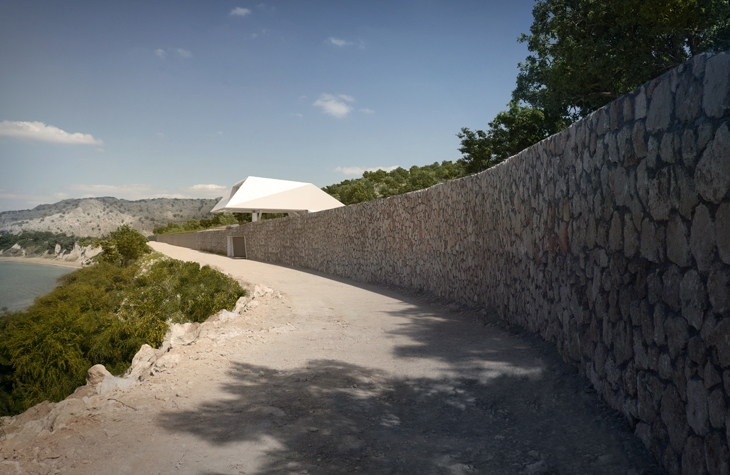 HORNUNG AND JACOBI ARCHITECTURE_VILLA F_01: APPROACHING THE SITE ALONG THE EXISTING AND CONTINUED NATURE STONE WALL.
HORNUNG AND JACOBI ARCHITECTURE_VILLA F_01: APPROACHING THE SITE ALONG THE EXISTING AND CONTINUED NATURE STONE WALL.READ ALSO: M-REPORT / RETHINK ATHENS / EXHIBITION PREVIEW & SMALL INTERVIEW OF THE WINNER MARTIN KNUIJT